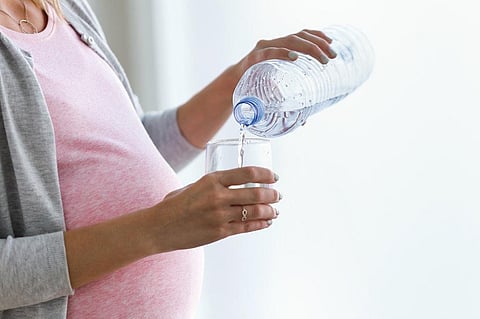

Extreme heat exposure during pregnancy has been linked to an increased risk of severe maternal morbidity (SMM), according to a new study.
SMM — characterised as severe and unanticipated circumstances during labour and delivery — is significantly correlated with prolonged heat exposure during the third trimester of pregnancy.
Long-term heat exposure was linked with a 27 per cent increase in the risk of SMM, found the study published in the journal JAMA Network Open on September 7, 2023.
Pregnant people with “lower educational attainment” and whose pregnancies began during the cold season had higher risks, the study added.
Age also played a part, with pregnant women under the age of 25 and those over the age of 35 showing an elevated risk.“Adolescent mothers are more likely to be in unfavourable social or physical conditions and may have limited knowledge or awareness to protect themselves against extreme heat,” it read.
“Pregnancy complications and risk factors can be more common among older mothers, possibly due to the physiological changes from aging, which may exacerbate heat effects,” the research added.
The analysis conducted at Kaiser Permanente Southern California, an integrated healthcare organisation, between January 1, 2008 and December 31, 2018, found extreme heat has been associated with many adverse obstetric outcomes. This includes preterm birth, premature rupture of membranes, low birth weight and stillbirth.
To provide new insights for SMM prevention, the analysis focused on environmental risk factors that have not been examined previously.
The study, which included 403,602 pregnancies with a mean age of 30.3 years, measured the proportion of different heat days — moderate, high or extreme heat during each pregnancy and by trimester to determine long-term heat exposure.
Short-term exposures, meanwhile, were calculated using heatwaves of varying durations during the last week of pregnancy.
It identified nearly 3,446 SMM cases among the 403,602 pregnancies. Moreover, high exposure to extreme heat days during the third trimester of pregnancy was associated with a 28 per cent increase in risk of SMM.
The timing of conception, leading to the stage of pregnancy during the hottest months, may influence the relationship between heat exposure and SMM.
The mothers who started pregnancy in the cold season (November through April) were more vulnerable to heat exposure. They had higher associations between heat exposure and SMM than those who started pregnancy in the warm season (May-October).
The document also listed associations between heat exposure and cardiovascular events during labour and pregnancy. It suggested the need for targeted interventions to reduce SMM risk, particularly among mothers with low socioeconomic status.